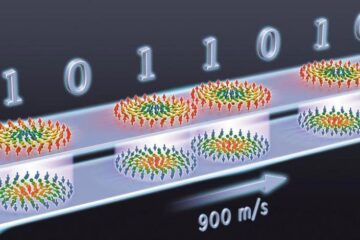New discovery increases understanding of how plants and bacteria see light

The investigated proteins are called “phytochromes”. They consist of thousands of atoms and can be thought of as tiny, microscopic machines. These proteins are found in all plant leaves, many bacteria and fungi. The proteins inform the cell whether it is day or night or whether it is cloudy or sunny.
“Phytochrome proteins are the eyes of plants and in many bacteria. We have now discovered how bacterial phytochromes work at the molecular level,” explains Sebastian Westenhoff at the Department of Chemistry and Molecular Biology at the University of Gothenburg.
Phytochromes change in the light
Efficient photosynthesis requires that leaves are exposed to the sun. For this, the plants have to grow towards sunlight and phytochrome proteins control this process. Similarly, bacteria use phytochromes to move to spots where they can survive better. The proteins detect the light and signal to the plant cell how much light is available.
“Each time a phytochrome protein absorbs light, it deforms in a well-orchestrated series of structural changes. We already discovered an early structural change two years ago. Back then we used a shortened phytochrome. In the meantime we have advanced our experimental methods and could now study a full-length protein with a biological activator unit, called histidine kinase. This revealed the change in the final stage of the process.” says Sebastian Westenhoff.
New ways of controlling cells
The discovery increases our understanding of how phytochromes work. This enables modification of the proteins, for example to increase crop yield. However, the new knowledge is also crucial for another technology, where scientists engineer light sensitive proteins to control organism by light. Potentially such artificial proteins can be used to release drugs at specific spots in out body, for example in cancer cells.
“Proteins are molecular nanomachines, which control most of what we see in Nature. Deciphering the structure of proteins is key to understanding how the machines work. This knowledge can also be used to modify or construct new proteins, with custom-built functions,” says Sebastian Westenhoff.
Collaborative effort
The project was carried out as a collaboration between two groups at the University of Gothenburg and the University of Jyväskylä in Finland. However, more collaboration was needed and the data for the study was recorded at experimental facilities in France, Switzerland, Finland, and the US.
“Numerous data sets had to be recoded and evaluated until a reliable and complete result was obtained.” says Sebastian Westenhoff, “but I think that all the hard work was worth it, because we now understand better how plants and bacteria see light.”
Link to the article in Science Advances: http://advances.sciencemag.org/content/2/8/e1600920
Contact:
Sebastian Westenhoff, Department for Chemistry and Molecular Biology
Tel.: +46 766 18 39 36, E-mail: sebastian.westenhoff@chem.gu.se
http://science.gu.se/english/News/News_detail/new-discovery-increases-understand…
Media Contact
More Information:
http://www.gu.se/All latest news from the category: Life Sciences and Chemistry
Articles and reports from the Life Sciences and chemistry area deal with applied and basic research into modern biology, chemistry and human medicine.
Valuable information can be found on a range of life sciences fields including bacteriology, biochemistry, bionics, bioinformatics, biophysics, biotechnology, genetics, geobotany, human biology, marine biology, microbiology, molecular biology, cellular biology, zoology, bioinorganic chemistry, microchemistry and environmental chemistry.
Newest articles

Properties of new materials for microchips
… can now be measured well. Reseachers of Delft University of Technology demonstrated measuring performance properties of ultrathin silicon membranes. Making ever smaller and more powerful chips requires new ultrathin…

Floating solar’s potential
… to support sustainable development by addressing climate, water, and energy goals holistically. A new study published this week in Nature Energy raises the potential for floating solar photovoltaics (FPV)…

Skyrmions move at record speeds
… a step towards the computing of the future. An international research team led by scientists from the CNRS1 has discovered that the magnetic nanobubbles2 known as skyrmions can be…





















